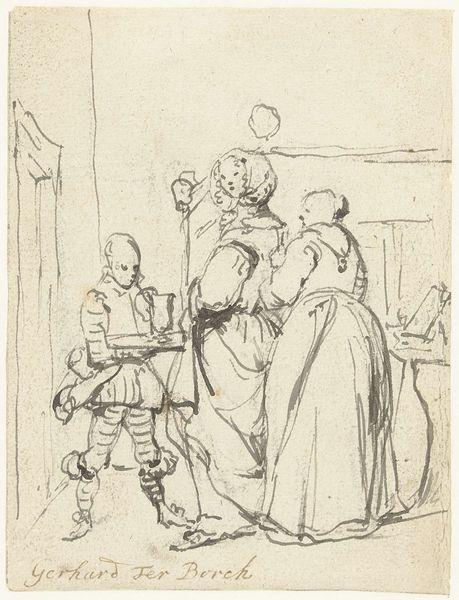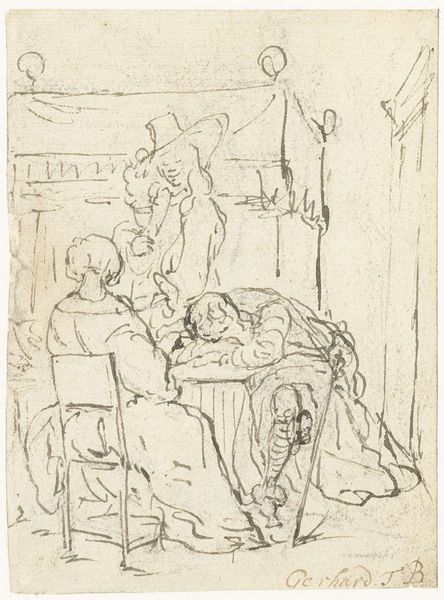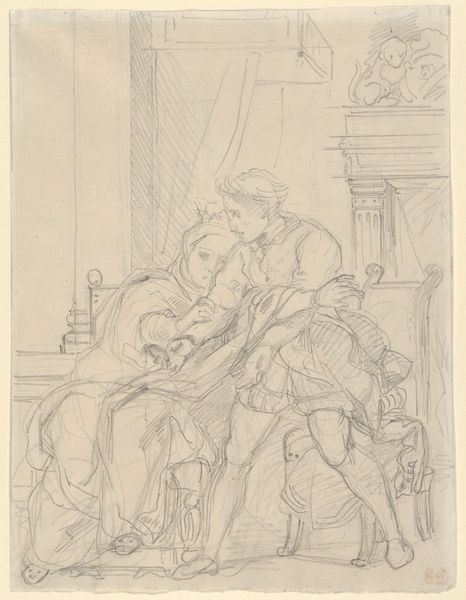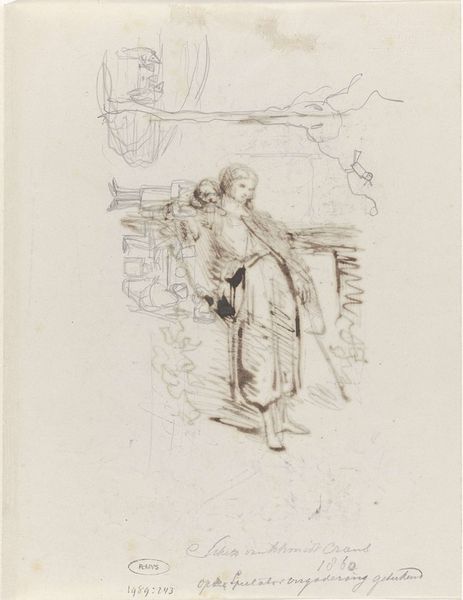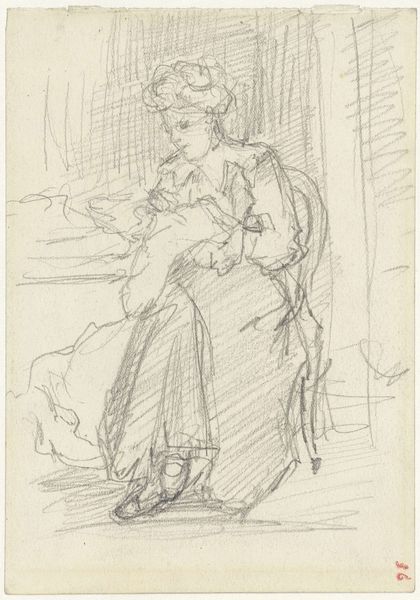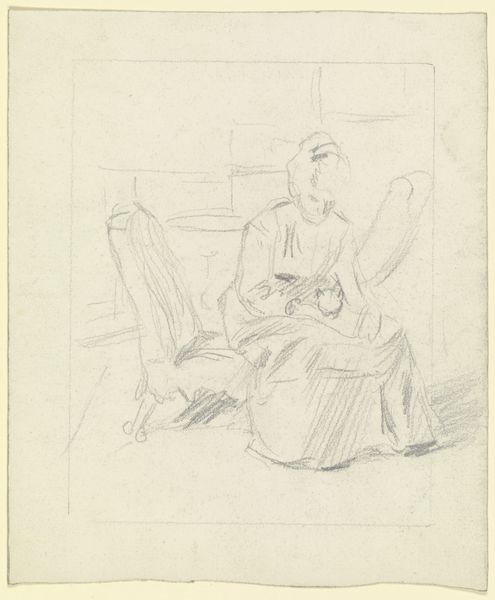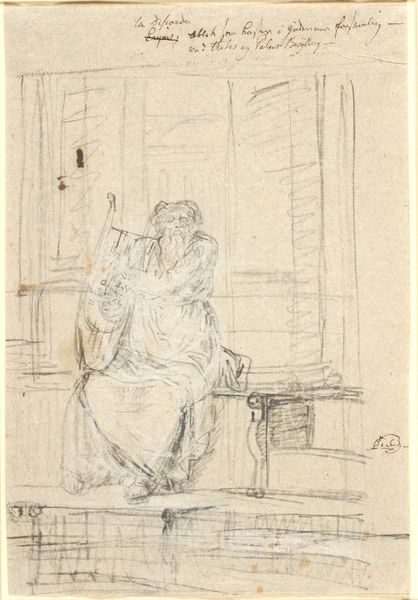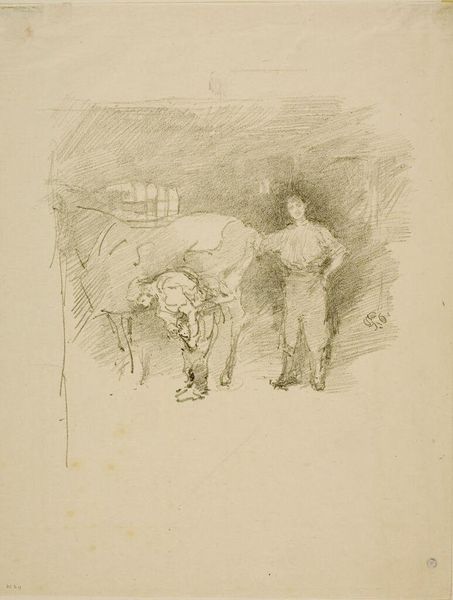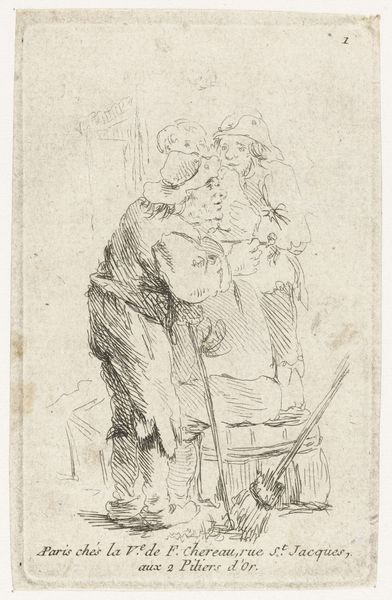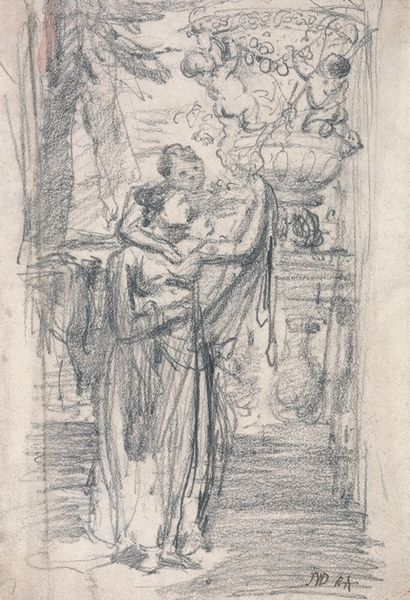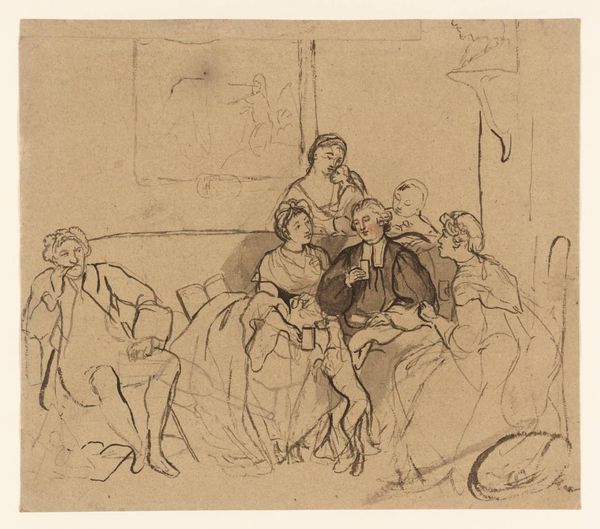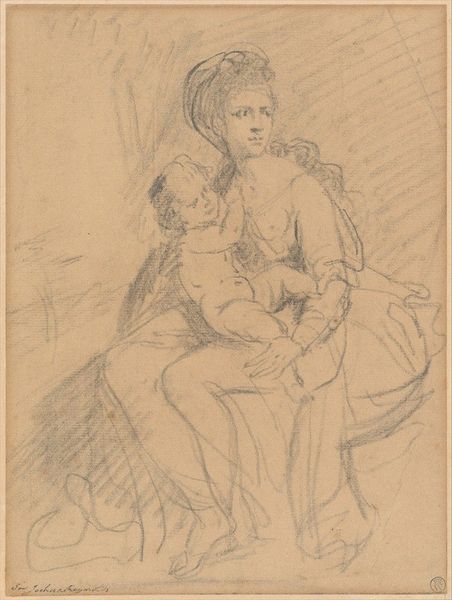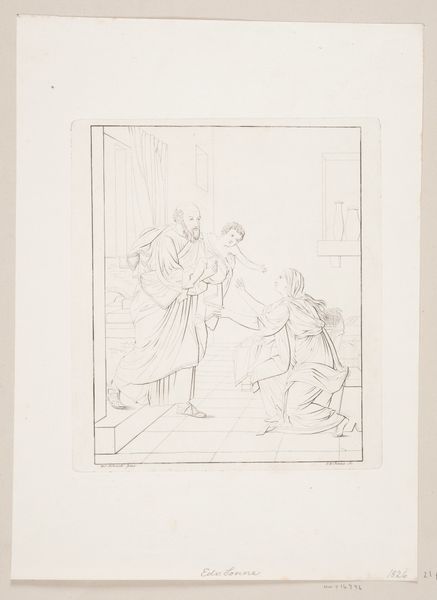
Dimensions: height 209 mm, width 151 mm
Copyright: Rijks Museum: Open Domain
Curator: Here we have “Weerspannige peuter,” which translates to "Refractory Toddler," an ink drawing on paper created sometime between 1767 and 1780. It’s currently held at the Rijksmuseum. Editor: My initial reaction is one of stark immediacy. The rapid, almost frantic linework captures the raw energy of a child throwing a tantrum. Curator: Precisely! It's vital to consider the role of childhood within 18th-century society, particularly as understandings of child psychology were beginning to emerge. The work offers a window into both domestic life and broader shifts in societal perceptions of youth and its relationship to education, labor, and societal control. Editor: Focusing on the medium, the artist's choice of ink on paper allows for quick, expressive marks. Notice the varying weight of the lines; they define form but also suggest movement, especially around the child's flailing limbs. The type of ink, its cost and availability would speak to the production context. The drawing suggests immediacy but also calculation regarding material use. Curator: And those rapidly sketched figures flanking the mother and child— are they witnesses to this domestic drama or figures embodying social constraints acting upon the mother's capacity for care? I see a narrative that interrogates ideas around family duty, the visibility of domestic labour, and the policing of behaviour in both children and women. Editor: Yes, but beyond representation, I am also intrigued by the economy of means in its production. The choice of a simple medium reflects broader issues around access to artistic training and material culture. Consider too, where this drawing might have been intended to be viewed; a personal sketchbook, or preparatory drawing that ultimately comments on the role and social expectations around maternal practices and gender roles within 18th century Dutch society. Curator: It is intriguing to ponder what this snapshot might convey about childhood at the cusp of Enlightenment, doesn’t it reflect an era questioning not just tradition, but also developmental norms, societal roles, and domestic power? Editor: I'll add that thinking through materials, we can see an everyday interaction captured on an easily obtained material. So many layers revealed through its making. Curator: A compelling intersection of historical circumstance and material constraints indeed. Editor: A remarkable testament to how even a fleeting image on paper holds significant value.
Comments
No comments
Be the first to comment and join the conversation on the ultimate creative platform.

